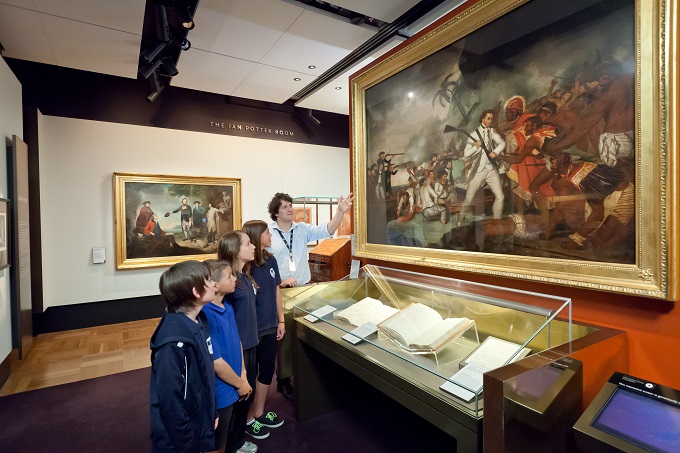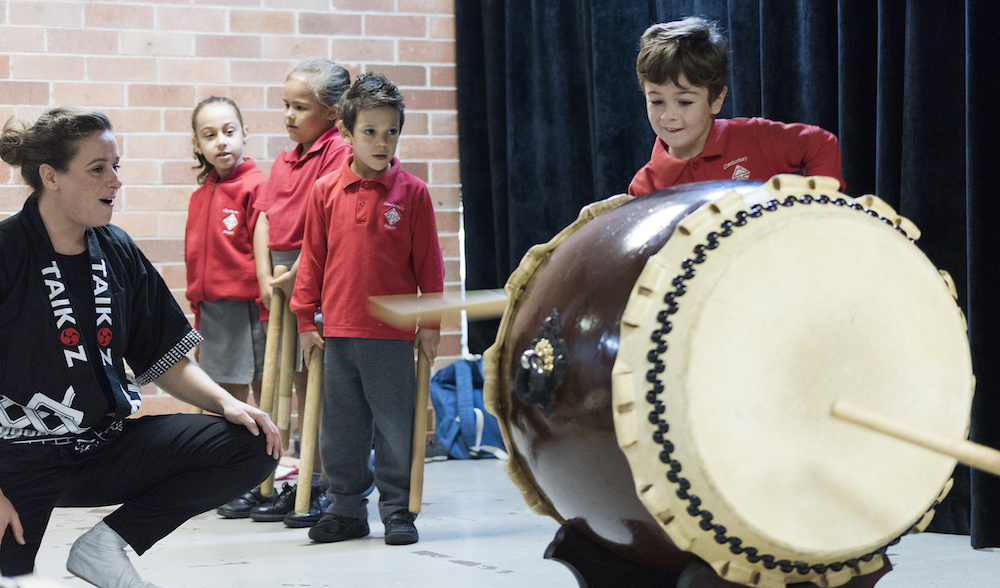School Camp: A raft of learning opportunities

Away from desks, devices, and the confines of school gates, children often display very different characteristics to those they show in the classroom.
Read the full article in our latest print issue, here.
School camp brings with it many opportunities to build relationships. The child who is boisterous in class may display vulnerability while homesick, for example, or the student who is shy during group discussion may shine as a group leader during orienteering.
School camps shift students and staff to new contexts; this can gift learners the opportunity to showcase different strengths and present new sides of their personality, which can in turn gift teachers the opportunity to see students in a new light and build better relationships outside the classroom to bring back into the classroom. And children get to see their teachers differently too: Who knew Ms Murrell was so good at backyard cricket? Or that the ‘strict’ teacher was so thoughtful and caring?
Yes, camp can open an unexpected treasure trove. However, if it is not planned and run correctly, camps can also be a Pandora’s Box.
The sense of apprehension around camp can be overwhelming for children, so managing expectations and providing tools for emotional self-regulation is important.
Clear communication is key, not just with parents and caregivers, but with students too. They want to know exactly what their experience at camp will look like. Provide as detailed a schedule as possible to help alleviate worry in the lead-up to the trip. Rather than passing around a paper copy or emailing it across, go through the schedule as a group and allow time for questions. Consider presenting the schedule visually; for example, watch a YouTube video of an activity they will be doing together, particularly if it is something they will not have done before.
A structured role-play activity can also ease anxiety and help put students in a growth mindset as they prepare for camp. Breaking down the abstract idea of ‘school camp’ into a series of actions, tasks, and manageable routines is helpful. For instance, a student may avoid attending camp altogether if they fear one activity on the schedule; whereas walking through the activities collectively can help reduce emphasis they have placed on a single activity. This reduces pressure and helps the child to manage their expectations by focusing on aspects they are more familiar or comfortable with and can look forward to.
Choosing your school camp venue
School camp accommodation can range from a wild bush setting where students and staff set up their own tents, to a catered cabin lodge, depending on budget, group size and desires student experience. Here are some core considerations for picking your prized camp locale…
How self-sufficient do you expect your students to be? This question will drive your venue hunt. Some providers allow students to cook their own food and sleep in small groups or pairs, while others provide fully catered mealtimes and house students in dormitory-style bunks. Self-directed learning in a camp setting benefits middle and high school attendees, so choosing a venue that allows them to self-cater and enjoy activities individually as well as in groups will enable students to test their boundaries and take initiative.
Create a kitchen roster and assign tasks! For many secondary students, independent living will be new and exciting. Also, find out whether the venue has self-directed skill-based games such as quoits or boules on hand for students to play during free time either alone or in groups. This can help create a camp’s upbeat spirit and provide a welcome distraction from any screen-deprivation that may occasionally start to creep in.
Large-scale campsites can accommodate 300+ if your school is game for going big with a whole-school camp! Many cater to the 50-80 range, allowing for 2-3 classes to combine for the trip. Mixing classes is a good way to spark new friendships while also allowing children familiar with each other to feel confident and comfortable.
Activate participation
Group hikes are a camp staple that get kids moving but also improve communication as students and teachers talk while they walk, learning to motivate and empathise. They are also a popular choice on leadership camps and for schools that emphasise spirituality depending—a guided meditation or historical route can be a great hiking alternative! For older students, trekking by torchlight after dark can feel more adventurous.
Meanwhile, scavenger hunts engage primary children by giving them ‘a mission’ that can sustain their interest in a long walk. Abseiling, kayaking, high ropes, and rock climbing are popular activities that can provide memories to last a lifetime–but safety must comes first and qualified instructors are non-negotiable. Raft-building is probably the poster child of a school camp and provides team-building opportunities galore–plus a lot of laughs when the time comes for crafted creations to set sail on a nearby lake. The right venue can help co-ordinate these types of activities. Communicating clearly, developing practical motor skills, using logic, and overcoming adversity are often all needed in these classic challenges.







